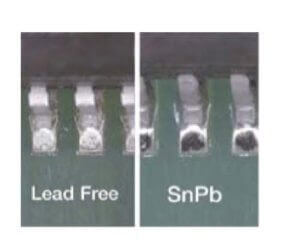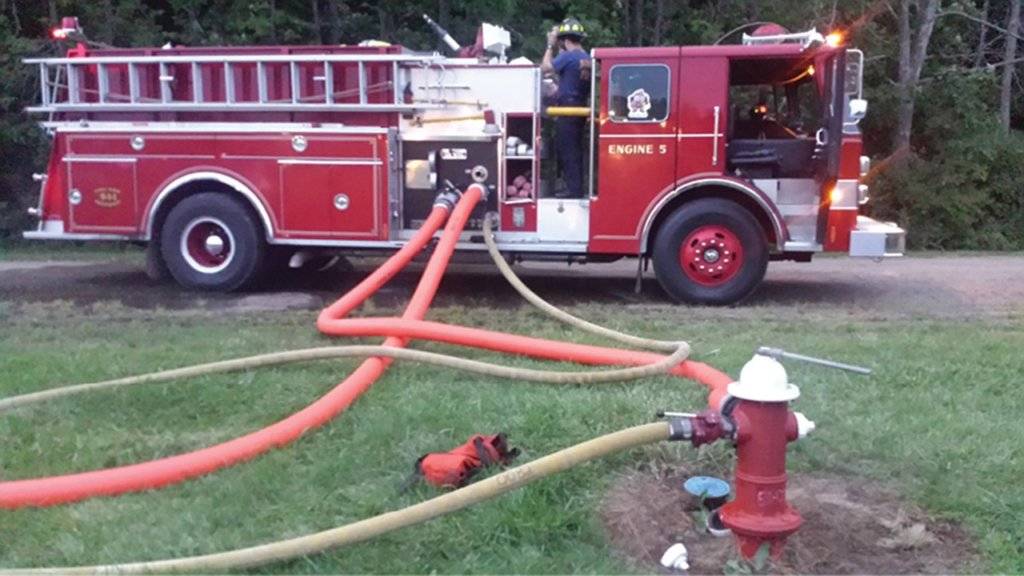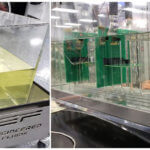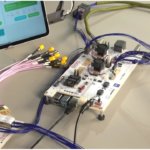A mechanical look at connector skew in your systems.
Electrical and Mechanical requirements collide when looking at interconnects in your electrical system. What can you do about it, how do you plan for it, and how do you pick the most rugged solution that still carries the data rate you are looking for?

As a 20 year mechanical engineer with Samtec, my early years were focused on making sure our MHz speed connectors would pass lead free reflow temperatures and the newer mechanical constraints presented by those extra +30° C and added seconds at that new temperature.
Now fast forward a few years with a fraction of the pin to pin spacing and pushing exponential speeds. We spend our time focusing on if we cut a cable center conductor 0.001” off from the one next to it. What is the impact of a few picoseconds of skew in system performance, and how lengthening or shortening a path could impact skew with respect to other signals. These mechanical steps can have an electrical affect on when the source signals are received by their intended targets. If your design relies on the signals all reaching their final destination, and they don’t, this is connector skew.
For a differential signal, the difference in delay between the + and – is called interpair skew. If one pair was off relative to the next pair, this difference in delay is called intrapair skew. Depending of the severity and speed of operation, a small difference in delay between two lanes, could in many applications impact drastically the performance of the whole channel.
A simplified way of understanding this would be when you set up next years Christmas light show, or you are setting up a sweet karaoke party with your friends (when social distancing is a thing of the past), you can afford up to a -125 millisecond (0.125 seconds) skew between your audio and video productions 1,2 and most people would not notice.
If you are working on supercomputers you may be looking for 0.10 nanoseconds (at the most) between channels. However, if you are Samtec and want to create the least disruption, we are going to make components in the single digit picosecond realm (< 0.00000000035 seconds/meter).

| Noticeable Range | Adjusted for scale (x1010) | |
| Audio/Visual delay | 125 milliseconds | 39.6 years |
| Supercomputer Skew | 0.1 nanoseconds | 1.7 minutes |
| Samtec EyeSpeed Cable Skew | 3.5 picoseconds | 3.5 seconds |
Some people do not like the water pipe analogies in the electronics world, but it is an easy visual for us mechanical types. When looking at a fire engine and breaking down the major components, you want to size everything for the volume of water you want to send through the pump. If your goal is to make sure the same volume of water comes out at the other end exactly at the same time, you better make sure the red hoses are identical, in diameter and length. If not, water will flow out of one pipe first and guess what “you’ll have skew”.

The problem is more difficult, when you not only need to send a single line or one differential pair, but many signals, and you want all of them to have similar delays (very small skew). In other words, if out of the fire truck there are 100 red hoses, you want to make sure water flows out at exactly the same time in all 100 pipes, this would not be an easy task. This is an example of why the collision between mechanical and electrical when designing these systems becomes evident. When designing a large system with many signals you don’t want to worry about connector skew.
Samtec’s Signal Integrity Team and Advanced Interconnect teams can help you design the optimum path for your system. Some solutions are tuned for differential signals across rows of pins and others are split from row to row. Samtec also has many open pin fields connectors that let you configure the optimal path for your design.
Our experts are happy to discuss your design considerations and offer up recommendations. As a component manufacturer, we strive to be well below any industry-standard threshold for loss or signal disruption. This is our “factor of safety” for you to design the rest of your channel as clean as possible.
References;



Leave a Reply